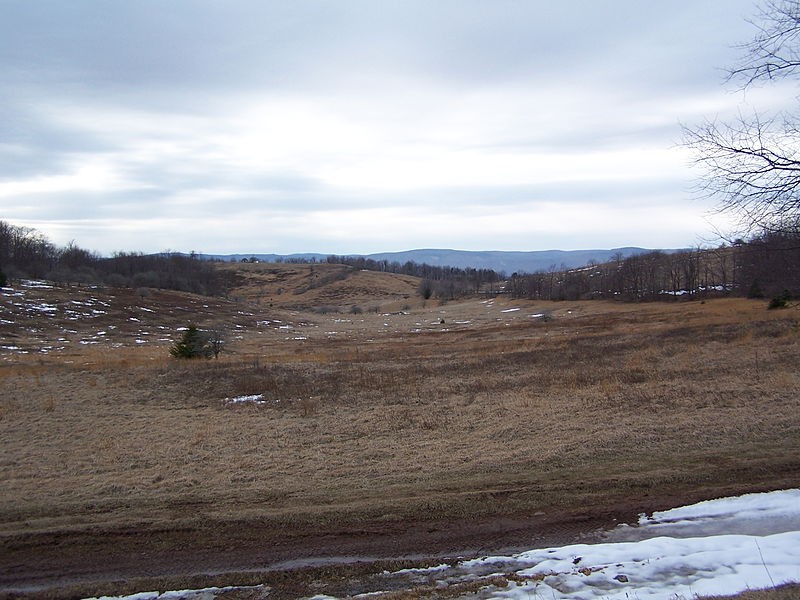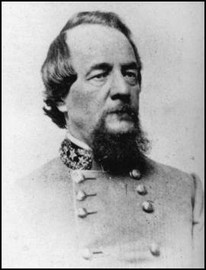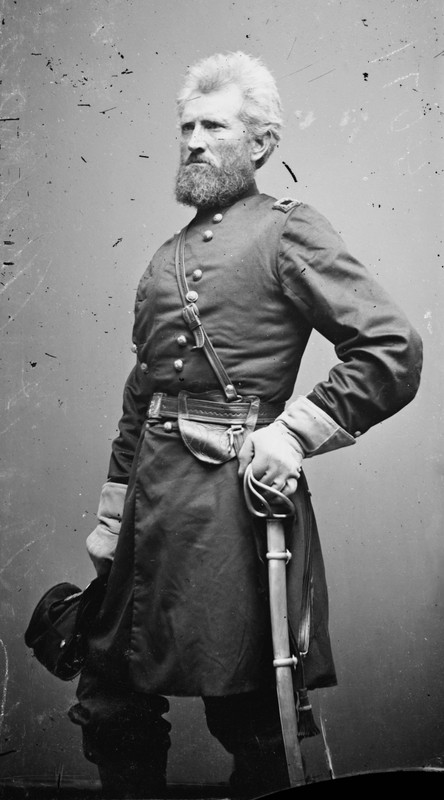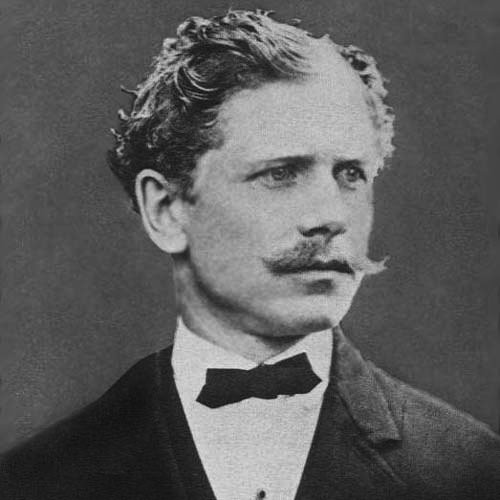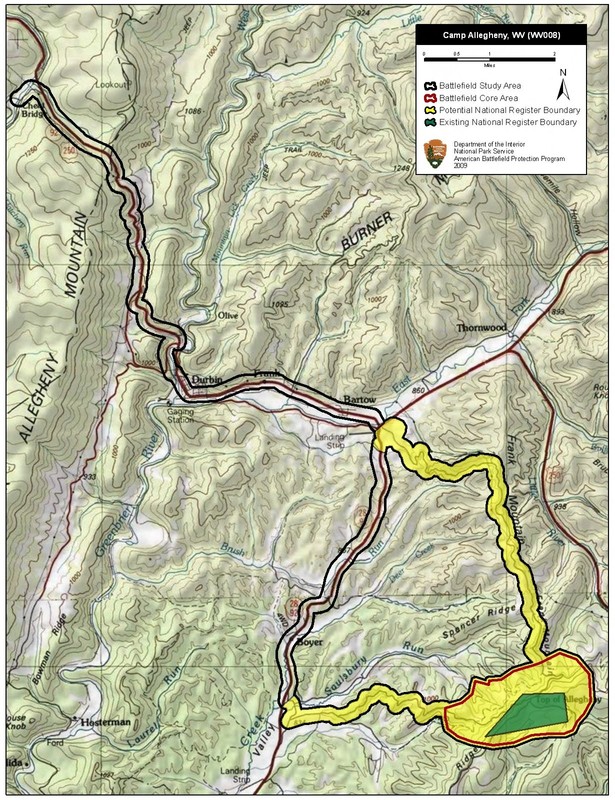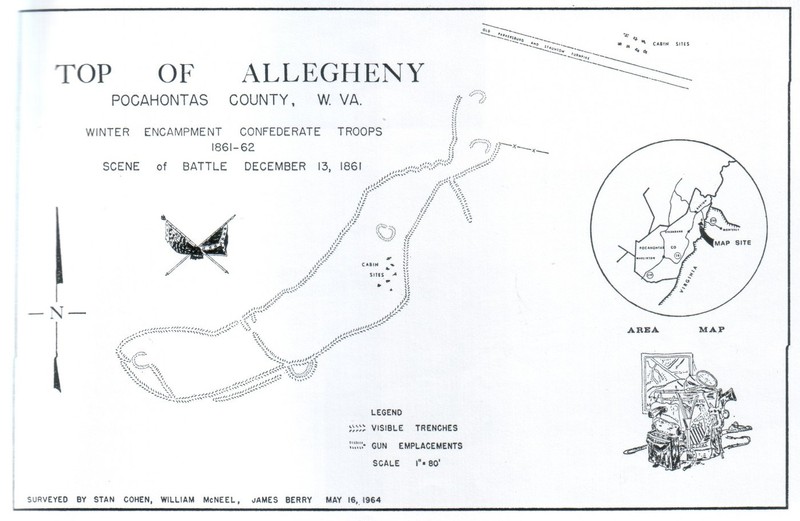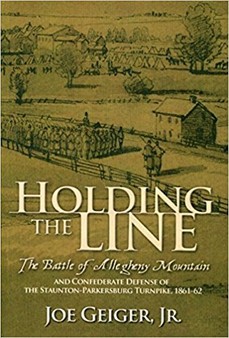In December of 1861, Col. Edward Johnson's Confederate forces positioned themselves at Allegheny Mountain to defend the Staunton-Parkersburg Turnpike, an important travel route through the difficult mountains of West Virginia--particularly in an era when large bodies of marching troops and wagons could render a poor road almost impossible to use. The Turnpike was a crucial route for men and supplies from Virginia and the Shenandoah Valley into Union-held northwestern Virginia.
Union and Confederate troops had faced off in the region of Allegheny Mountain almost since hostilities had broken out earlier in 1861. The presence of Camp Bartow, a strong Confederate fortification on the Greenbrier River between Allegheny and Cheat Mountains, precipitated the Battle of Greenbrier River on October 3rd. Though Col. Johnson was not in overall Confederate command at the time, his brave and decisive conduct at Greenbrier River made him the top choice to command the remaining garrison when the majority of Confederate forces were withdrawn to Monterey, Virginia.
Famed Confederate General Thomas J. "Stonewall" Jackson, who had earned his immortal moniker only a few months before at the First Battle of Bull Run, was preparing an offensive against Union forces in northwestern Virginia. To this end, Col. Edward Johnson's superior, General W.W. Loring, had been instructed to reinforce Jackson with as many troops as possible. Loring withdrew most of his command to Virginia, abandoning the well-defended position at Camp Bartow in November 1861 and leaving only Johnson with a small contingent of 1,200 men at Camp Allegheny until it could be ascertained that the Camp Bartow’s vacancy would not result in a Union offensive through the mountains into the Shenandoah Valley.
General Robert Milroy was inadvertently destined to spoil Loring's plan to withdraw Johnson to Virginia before the end of the year. The Union general appears to have been spoiling for a fight, knowing that he and his Indiana regiments would soon be transferred to other theaters of the war before a decisive battle had been fought. Though he had no orders to attack, Milroy's letters home to his wife convey a strong desire to oust the Confederates from their fortifications and march on Staunton.
On December 12th, Union forces advanced to find the Camp Bartow deserted. But Johnson, aware that Milroy was beginning to scout the area, had set up an ambush of 100 men on the road between Bartow and Camp Allegheny, temporarily bloodying the Union vanguard and preventing them from advancing up the mountain.
Milroy had the excuse he was looking for. The following day, after marching his troops for much of the night, Milroy’s Union regiments assaulted Johnson’s lines at Camp Allegheny for several hours. In a bold but risky plan of attack, Milroy had divided his forces and sent a significant portion of his men on a difficult flanking march to surprise Johnson in the rear and cut off his retreat. Like so many attempts at just such a complex maneuver during the Civil War, when limited means of communication made it difficult to coordinate simultaneous attacks, it was doomed to failure.
The battle, though small by the standards of the Civil War’s major engagements, was fierce and victory seemed at times within Milroy’s grasp. Charges see-sawed across the slope of Allegheny summit, but Johnson had judiciously kept troops in reserve, and quickly stabilized any wavering points along his line.
As for Milroy’s ambitious flank attack--it failed to take meaningful shape. The difficulty of the steep, heavily-wooded terrain delayed its approach. By the time the second bedraggled Union columnn arrived and did, indeed, take Johnson’s defenses by surprise, Milroy’s other attack was already spent. Countercharges by the determined Confederates had won the field, and the entire Union assault force was exhausted--many of them had been marching in freezing temperatures for most of the last twenty-four hours. Johnson simply shifted troops to meet the new attack and defeated it with ease.
The battle was costly for both sides, given the small size of the forces involved. Both Union and Confederate suffered nearly 150 killed, wounded or missing. In Johnson's case, this was almost one-sixth of his total strength. Johnson was to earn the nickname "Allegheny" Johnson for reportedly engaging in hand-to-hand personal combat during the fight, and as a Christmas present, he was promoted to Brigadier General by the Confederate War Department.
Though Milroy failed to dislodge the Confederates and seize the road to Staunton, Stonewall Jackson was deprived of Johnson's reinforcements for the upcoming campaign. Loring elected to keep Johnson at Camp Allegheny, convinced from the intensity of Milroy's attack that a larger Union offensive up the Turnpike was inevitable.
The following spring, Johnson was withdrawn to Monterey. Milroy seized Camp Allegheny and marched through to Virginia, where he was defeated by Stonewall Jackson at the Battle of McDowell in May 1862.
